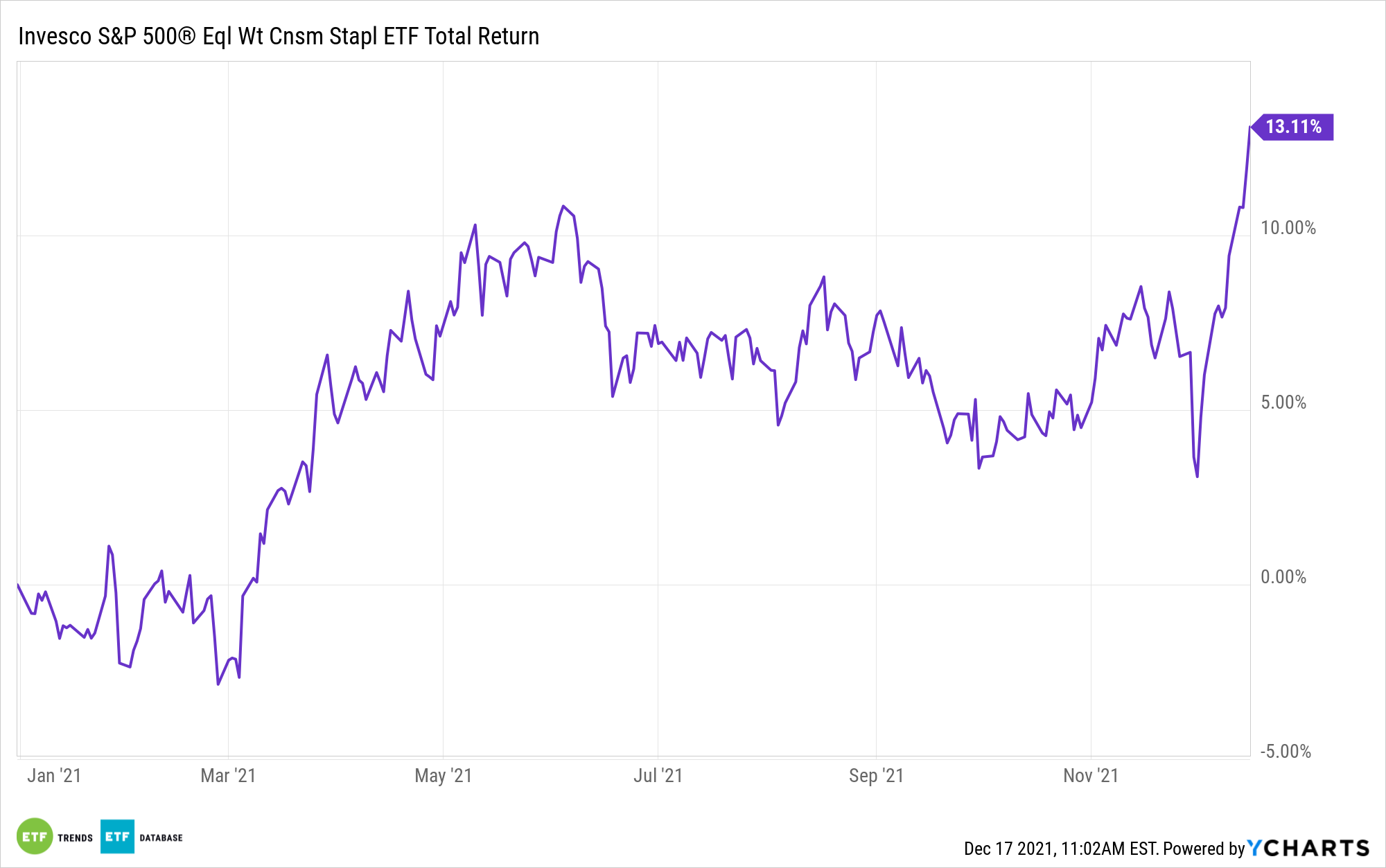The Federal Reserve’s tapering acceleration, interest rate outlook, and still-high inflation are among the issues plaguing stocks in recent days.
However, that’s a broader statement because some sectors are on fire, namely consumer staples. While growth and stocks were tumbling on Thursday, consumer staples exchange traded funds were soaring. For example, the Invesco S&P 500 Equal Weight Consumer Staples ETF (RHS) gained almost 1.1% on volume, more than double the daily average.

The equal-weight staples ETF is up 4.81% over the past week and resides at all-time highs, and some market participants believe that there’s more upside in store for the high-dividend, low-volatility sector.
“Consumer-staples stocks have raced higher recently, indicating that investors are seeking to defend themselves against market volatility. It looks like shares in the sector are poised for more strong performance, at least in the short term,” reports Jacob Sonenshine for Barron’s.
RHS holds 34 stocks and follows the S&P 500 Equal Weight Consumer Staples Index. Sporting a dividend yield of 1.89%, the equal-weight sector fund is up an admirable 13.11% year-to-date. More importantly, the Invesco ETF is proving reliable against a challenging backdrop.
“The strength in consumer-staples stocks continued even after Wednesday’s news that most policy makers at the Federal Reserve expect three interest-rate increases in 2022, up from the prior forecast of two. The staples fund gained 1.1%, keeping pace with the Dow Jones Industrial Average,” according to Barron’s.
RHS offers other benefits. While it’s not as diverse as a broader market equal-weight ETFs, it is significantly less concentrated than cap-weighted consumer staples ETFs. For example, Costco (NASDAQ:COST) is the largest component in RHS and commands a weight of 3.61%. Procter & Gamble (NYSE:PG) represents more than 16% of the cap-weighted S&P 500 Consumer Staples Index.
More so than broader equal-weight ETFs, equal-weight sector funds can and do lean into the size factor. In the case of RHS, the fund devotes about 59% of its weight to mid- and small-cap stocks. Add to that, some investors are looking to staples stocks amid concerns that the Fed will hike rates multiple times next year.
“Interest in these stocks has emerged anew because higher interest rates could slow down economic growth—a setback for industrial companies and those that sell discretionary goods. Demand for staple goods holds up better when people cut their spending, so companies in the business tend not to see as large a hit to sales and earnings in harder times,” according to Barron’s.
For more news, information, and strategy, visit our Portfolio Strategies Channel.
The opinions and forecasts expressed herein are solely those of Tom Lydon, and may not actually come to pass. Information on this site should not be used or construed as an offer to sell, a solicitation of an offer to buy, or a recommendation for any product.

